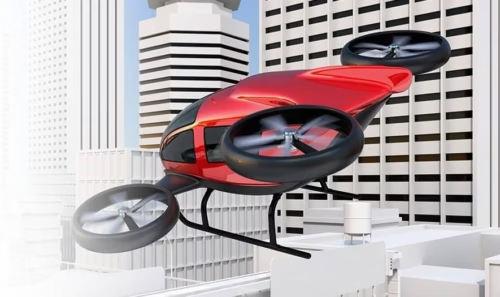
It is not a secret that after what constitutes the labour cost, fuel is what denotes the biggest cost component for all aircrafts. This brings us to the detail that by reducing fuel, an aircraft can reduce cost significantly. More noteworthy is the reduced impact that this will have on the environment by large.
Governments all over realize this need to address the challenges of climate change and targets have been set to alleviate CO2 emissions from aircrafts. However, in order to achieve this, there is a need for strong commitment from all stakeholders. The technology, operations, the infrastructure and the policies have to be favourable. The aviation industry has set a long term goal of halving the net CO2 emissions by 2050 compared to what they were in 2005. In other words, your flight in 2050 would generate just 50% CO2 when compared to the same flight back in 2005. The two main areas of action are development of sustainable aviation fuels and research into future design concepts by aircraft and engine manufacturers.
Fuel and Environmental Efficiency
In an aircraft, the measurement of the fuel it needs to operate to a distance can show you how efficient it is. This can be portrayed in many ways. For example the litres per passenger per kilometre. This may vary depending on the type of aircraft.
The environment efficiency of aircrafts refer to the impact the running of aircrafts can have on the environment. This can be done by Climate action, reducing noise, Improving air quality, Greener manufacturing, light weighting, Building resilience to climate change and more.
In order to be more fuel efficient and environmentally friendly, one needs to upgrade the fleet and stop the use of older aircrafts that use more kerosene, amongst other materials. Adoption of newer aircraft with winglets at the end of wings to reduce drag [video explanation] and fuel consumption, and the usage of more environmentally friendly materials while manufacturing is the way ahead to achieve this feat.
These are easier said than done.
Simulation to the rescue
Ansys is the global leader in engineering simulation helping deliver radically better products to the world. Simulation solutions from Ansys also helps in designing aircrafts that are environment friendly and fuel efficient.
Social, political and technological changes including rising fuel costs, environment regulations and also advancements in sensors, batteries and more are leading to many changes and expectations from the A&D. The need of the hour is the development of autonomous, efficient, more electric aircraft. This means more complex systems and a lot more effort in very little time.
Simplification of complexities
There is a need like never before for aircraft designs to be out in the market as quickly as possible. This is near to impossible without simulation. Simulation can quickly recapitulate designs. The safety of the designs can also be tested in a simulated environment and systems can be simplified and the certifications can be accelerated.
Ansys simulation helps aeronautical engineers design fuel-efficient and environment-friendly vehicle by using computational fluid dynamics (CFD) to reduce aircraft drag. Simulation can also be incorporated to utilize materials that are lightweight into designs like composites. Additive manufacturing can also be used to optimize topology and lattices. Simulation can even be used to design and integrate hybrid and fully electric propulsion systems and more.
Pervasive Simulation
The growing complexity puts a strain on engineering productivity. Keeping track of all the changes and impacts can be very taxing for engineers. Newer technologies are in the market quicker than ever before. Thanks to simulation, engineers can simplify processes by simulating everything with multiphysics, simulating in real-time that leads to fewer redesigns, build novel geometrics with additive manufacturing and visualize concepts and more.
Pervasive is anything that is widespread and Ansys’ pervasive technology helps optimize the aircraft. Simulation enables one to explore multiple design variations for engineers without spending money and time on physical prototypes. ANSYS Maxwell helps design new electric propulsion systems. ANSYS CFD enhances aircrafts’ aerodynamics and improves propulsion systems. To find alternative, lighter, high-performance materials among the thousands now available for aviation, ANSYS Granta comes to the rescue. Topology can be improved with ANSYS Mechanical and the ANSYS Additive Suite can print it. Pervasive simulation technology can digitally connect, test and validate systems in a virtual environment.
New cockpit designs and aircraft connectivity are a reality thanks to simulation. Thus simulations will speed up development and ensure that autonomous vehicles can handle any weather or emergency situation. Added safety and Wi-Fi features including connectivity to report crucial data can improve safety abundantly.
A team will take hours to determine the right material for an aerospace part but ANSYS Granta can do it with a single engineer in 20 minutes. Certification-ready control code takes over 10 programmers’ months or even years to create. ANSYS SCADE can create it automatically cutting time and cost.
Using Simulation can also optimize maintenance, repair and overhaul. Simulation data, historical data, digital twins and predictive maintenance helps MRO crews to schedule an aircraft for maintenance a few flight hours before it needs to be fixed. This ultimately increases safety. Simulation reduces effort, budgets and human power needed to a large extend. Simulation saves millions of dollars and hundreds of thousands of work hours as opposed to manual testing.
Thus with improved engine performance, less weight and reduced aerodynamic drag, Ansys is instrumental in using engineering simulation to design more fuel-efficient aircraft and thus ensuring that the impact on the environment is also low. This also helps to save a lot of money in fuel and reduce toxic emissions.

